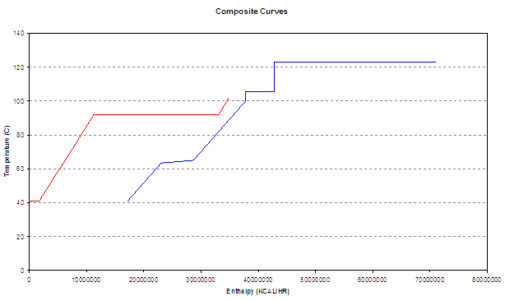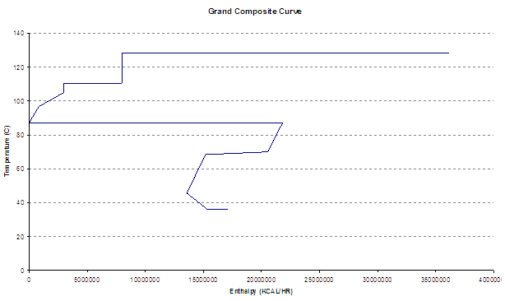PINCH ANALYSIS
Minimizing energy consumption of processes with Pinch analysis
Pinch analysis is a methodology for reducing energy consumption of processes by calculating thermodynamically feasible energy targets (or minimum energy consumption) and achieving them by optimizing heat recovery systems, energy supply methods and process operating conditions. It is also known as “process integration”, “heat integration”, “energy integration” or “pinch technology”. Such pinch analysis results in substantial financial savings. The techniques were first developed in the early 1980’s by teams led by Professor Bodo Linnhoff at University of Manchester (UK). In France, Jean-Paul Gourlia also contributed to popularize this approach with several reference papers on this topic. Many refinements have been developed since and Pinch Analysis has been extended beyond energy applications. Pinch technology has been successfully used in a wide range of industries, including non-chemicals: food industry, paper mill, etc to improve the energy efficiency of the process and reduce the global energy bill.
The method is based on thermodynamic principles and allows to determine the best heat exchangers network and utility system.
It analyzes possible heat exchanges between cold streams (requiring heat) and hot streams (releasing heat) in order to minimize irreversibilities. The process data is represented as a set of energy flows, or streams, as a function of heat load (or enthalpy) against temperature. These data are combined for all the streams in the plant to give composite curves, one for all “hot streams” (releasing heat) and one for all “cold streams” (requiring heat). The point of closest approach between the hot and cold composite curves is the pinch temperature (pinch point or just pinch), and is where design is most constrained. Hence, by finding this point and starting design there, the energy targets can be achieved using heat exchangers to recover heat between hot and cold streams. In practice, during the pinch analysis, cross-pinch exchanges of heat are often found between a stream with its temperature above the pinch and one below the pinch. Removal of those exchanges by alternative matching make the process reach its energy target. 
 Pinch analysis can be used for existing plant retrofit as well as for new plant design. In process engineering design steps, it stands after the design of reactors and products separation equipment and prior to utility system.
Pinch analysis can be used for existing plant retrofit as well as for new plant design. In process engineering design steps, it stands after the design of reactors and products separation equipment and prior to utility system.
Main advantages of this approach includes:
- it is mainly a graphical method which allows the engineer to keep a physical approach of involved phenomenon while other optimization techniques are purely numerical;
- the energy (or exergy) minimization is performed without any knowledge of the heat exchanger network which is designed afterwards;
- a very deep knowledge of the analyzed process is not required to apply the method and retrieve substantial savings;
- it takes into account the whole process or the whole plant, providing a systematic approach instead of focusing on a specific unit or equipment;
- it is demonstrated that its use can reduce both capital and operating costs. Emissions are consequently also minimized.
Several software are available on the market to calculate the energy targets, plot the composite curves, and automatically design the heat exchanger network. Such functionalities are available in ProSimPlus software and ProSimPlus Energy software. However applying this method, in particular for existing plants improvement requires skilled and experienced engineers. It is a typical field where the engineer behind the tool is much more critical than the software itself. Fives ProSim which started this activity in 1992 is among the very few team which have gained such experience.
For many years now, Fives ProSim engineers perform pinch analysis, on various processes in various industries.




